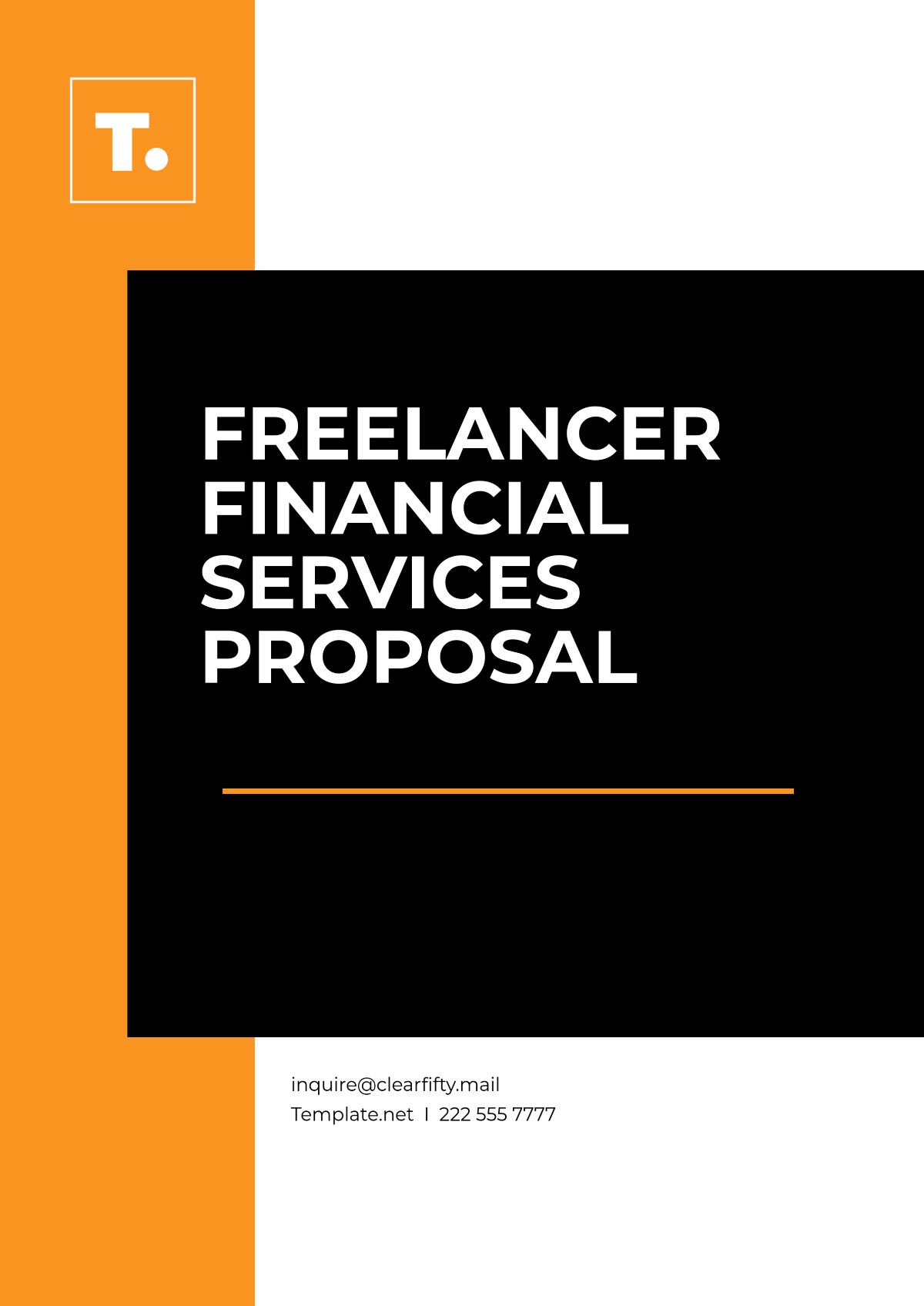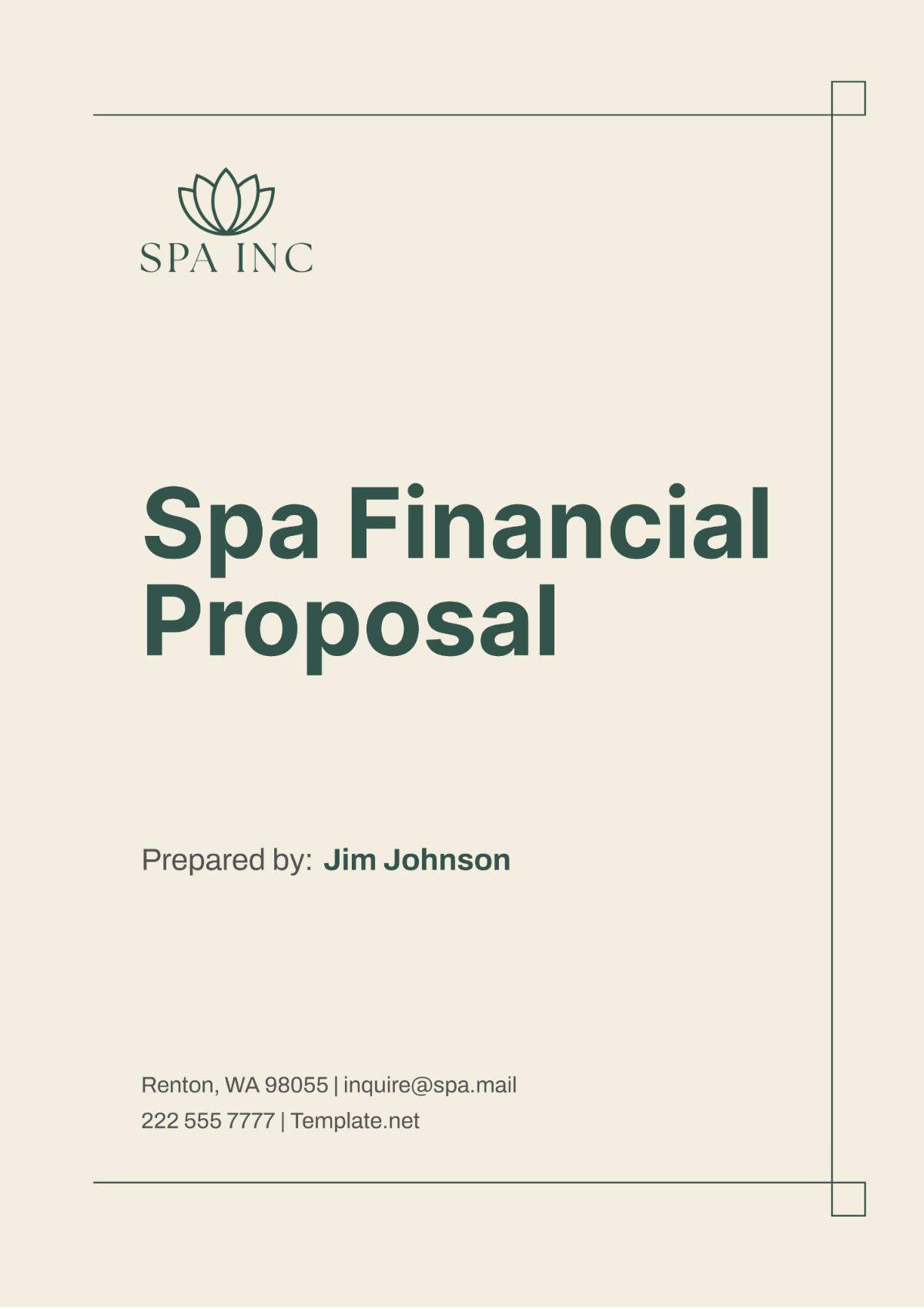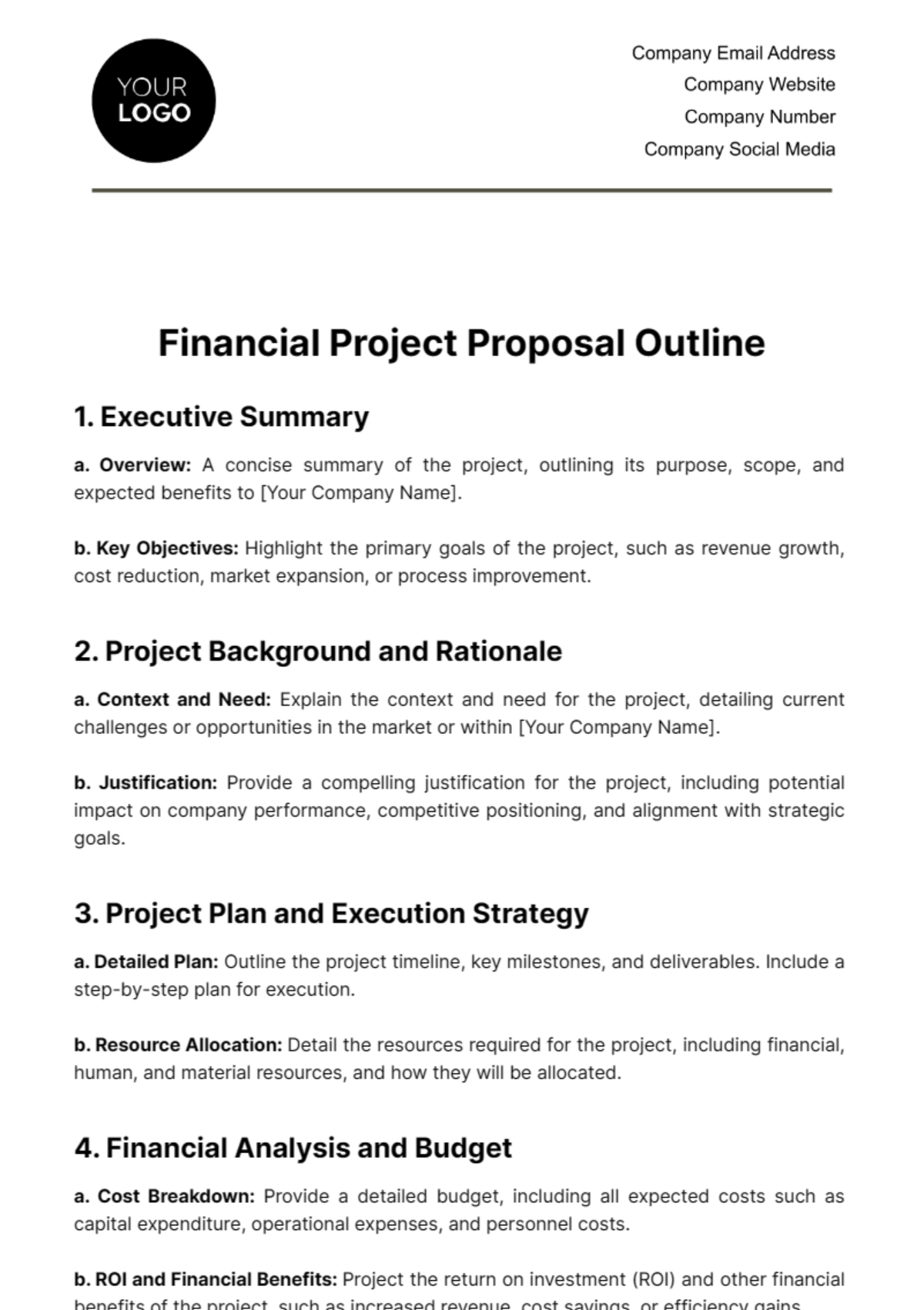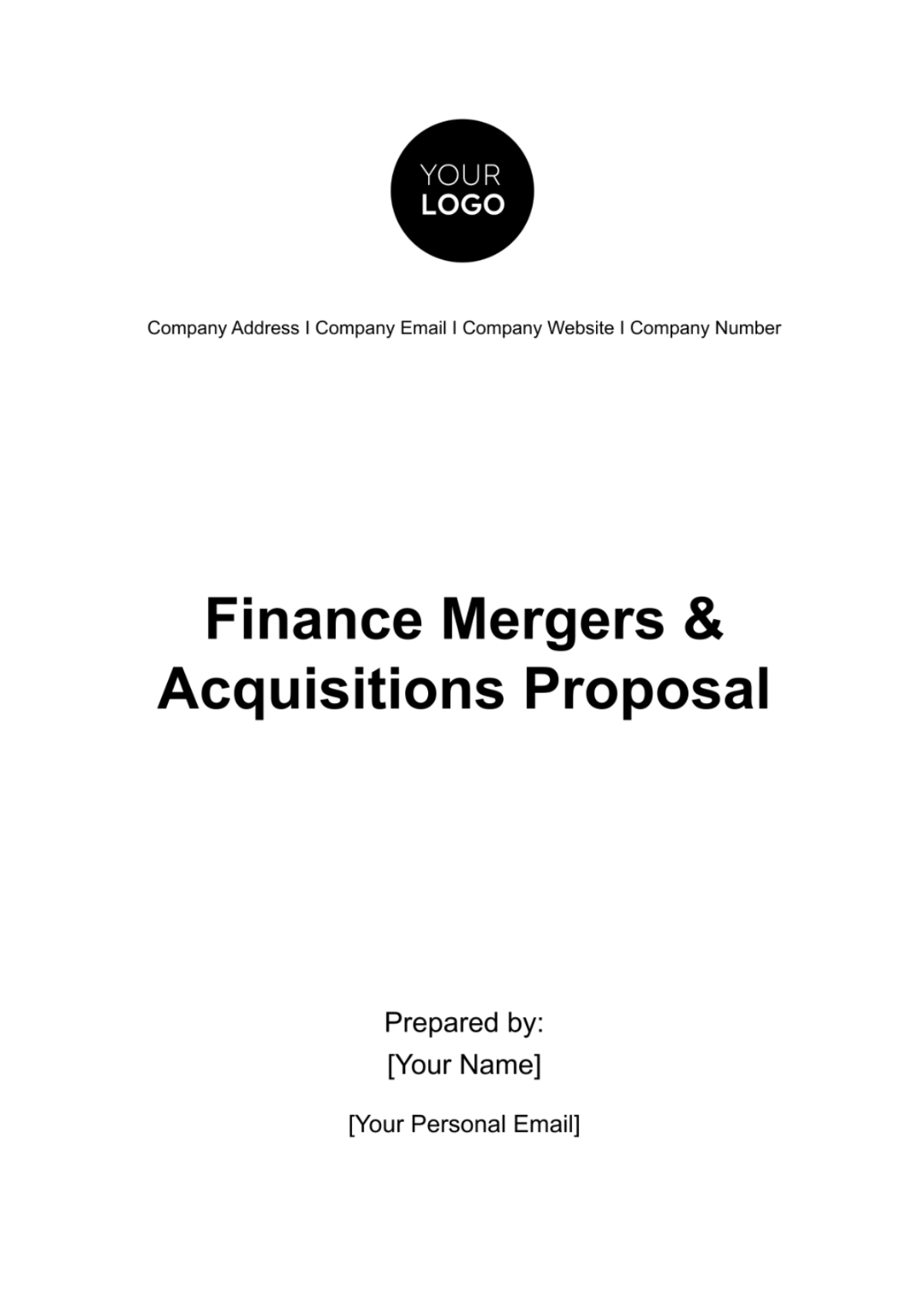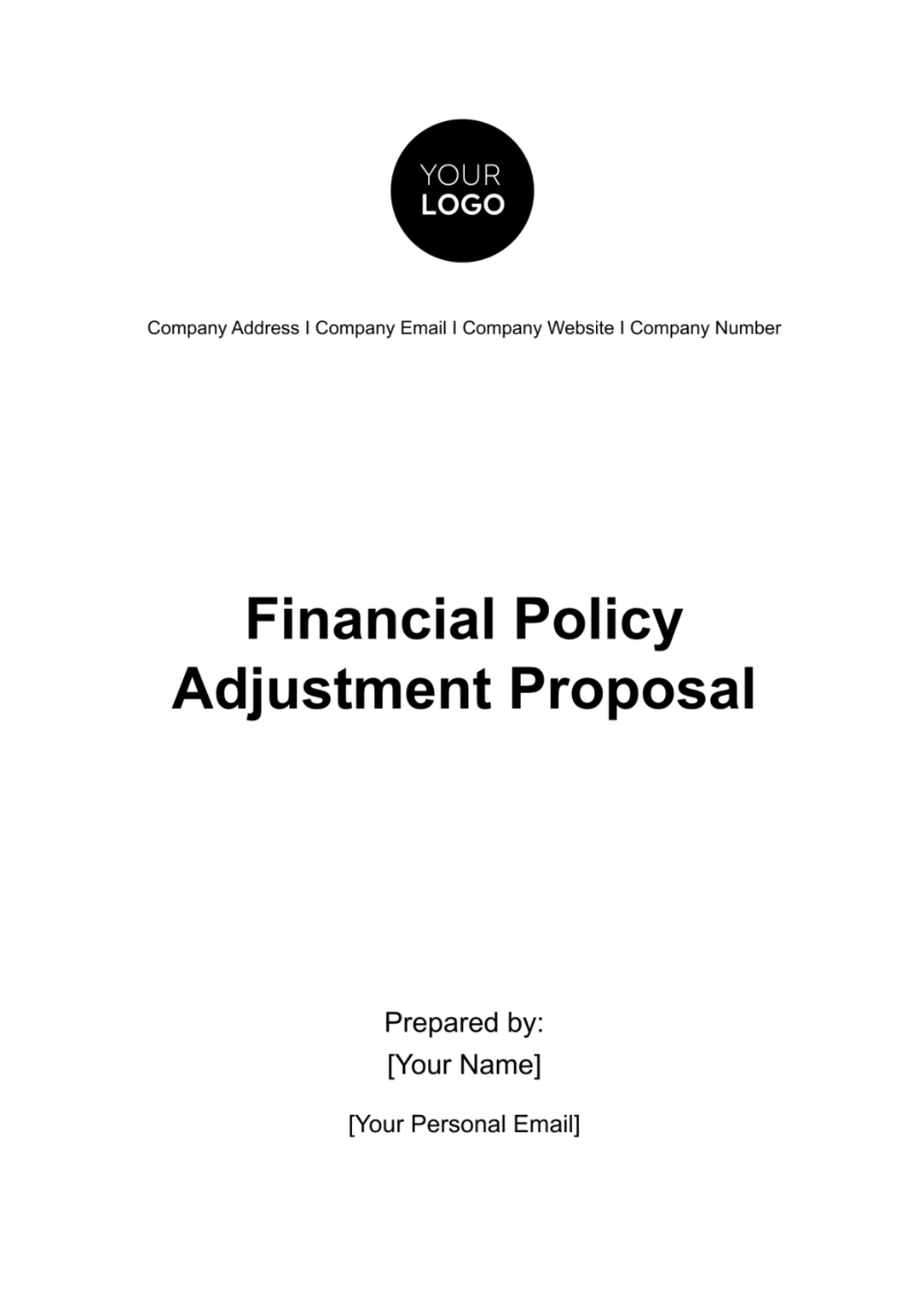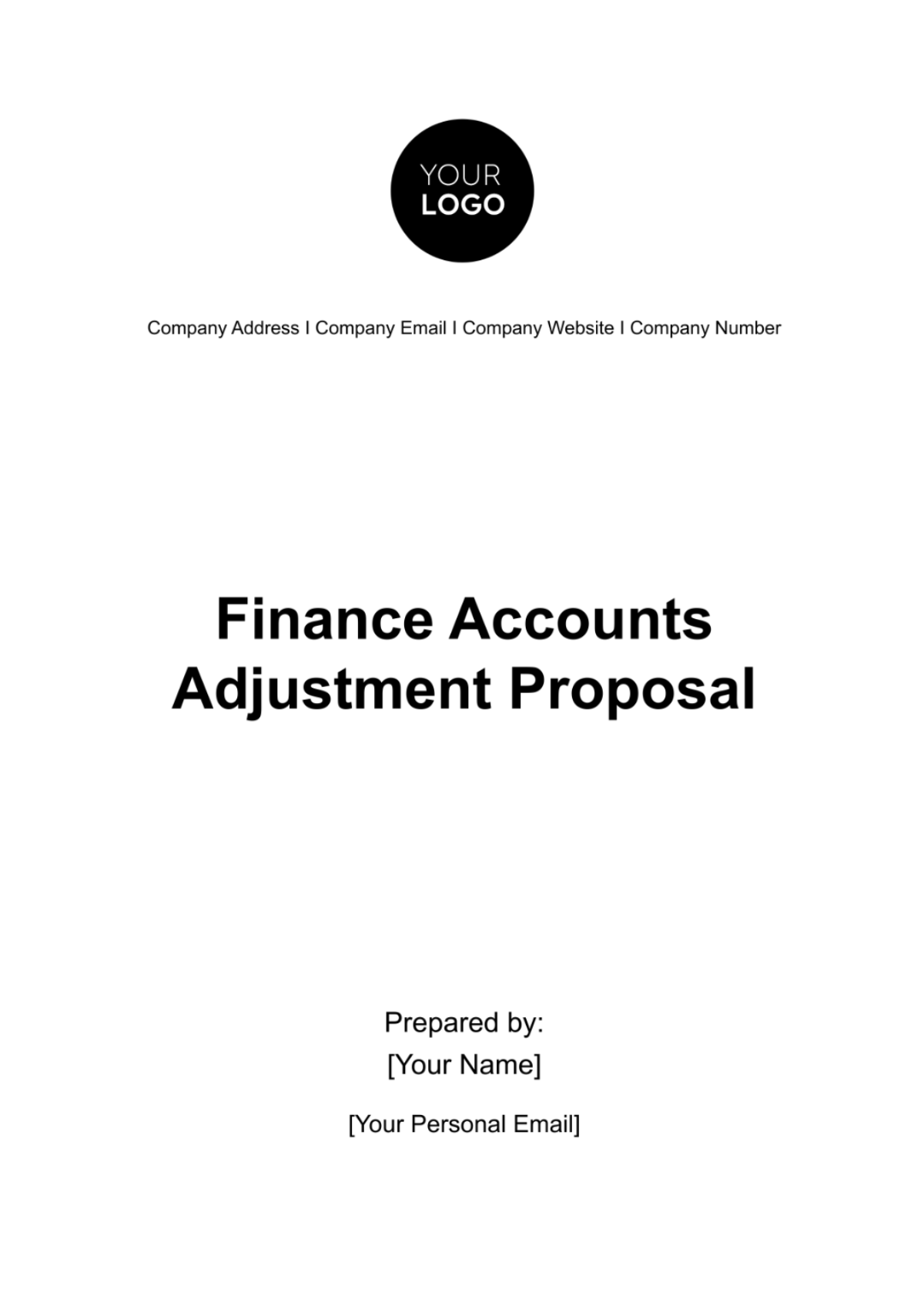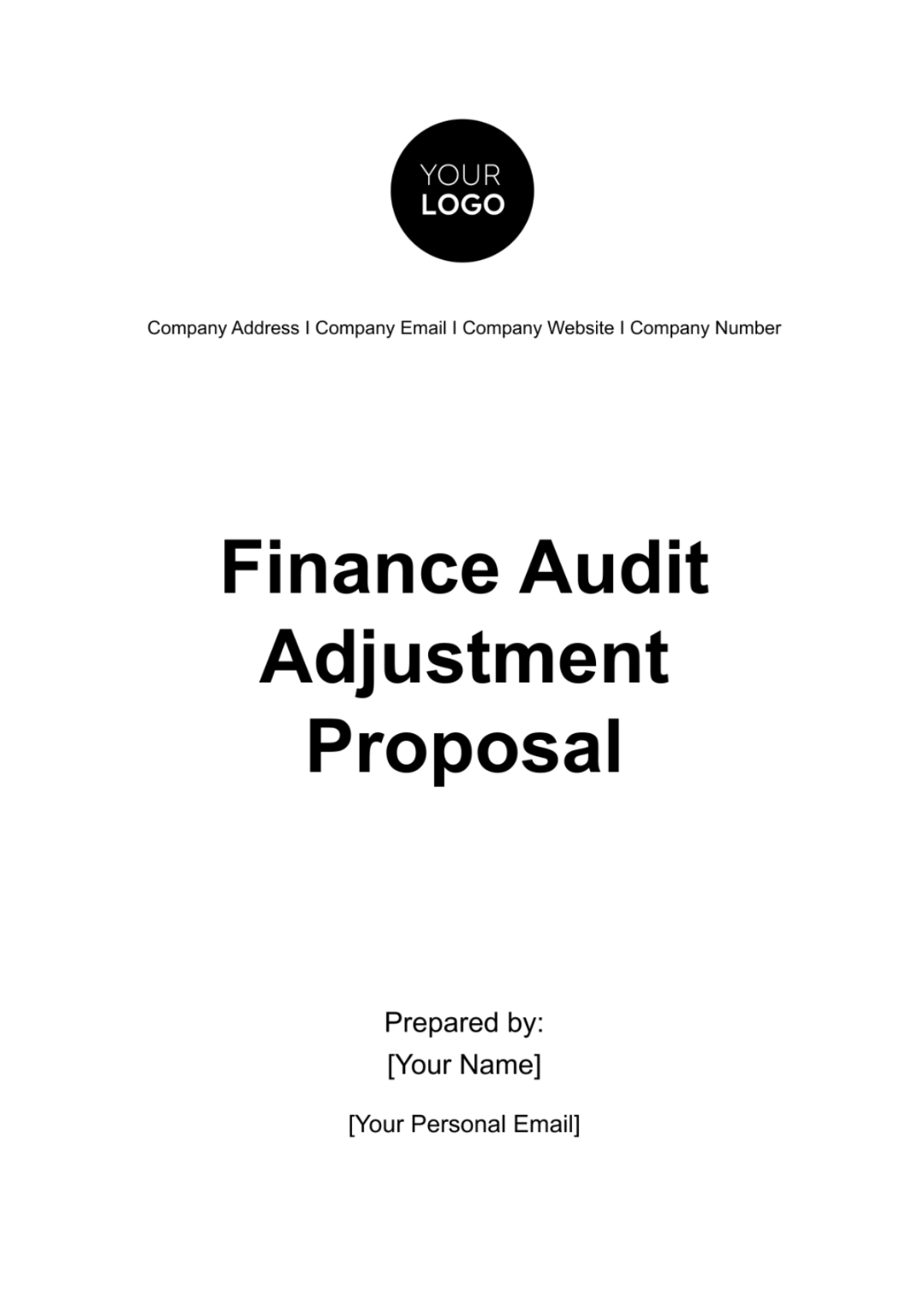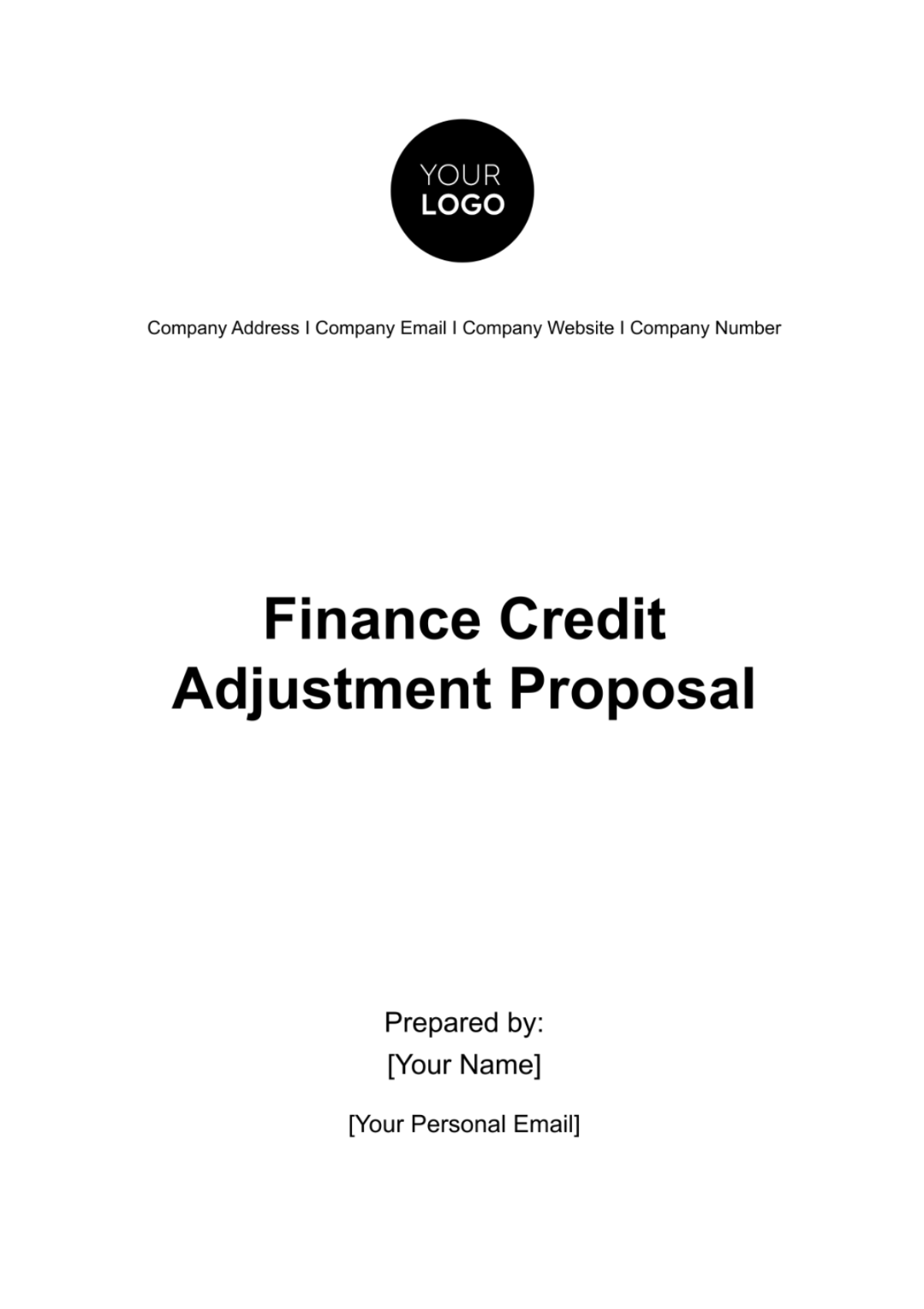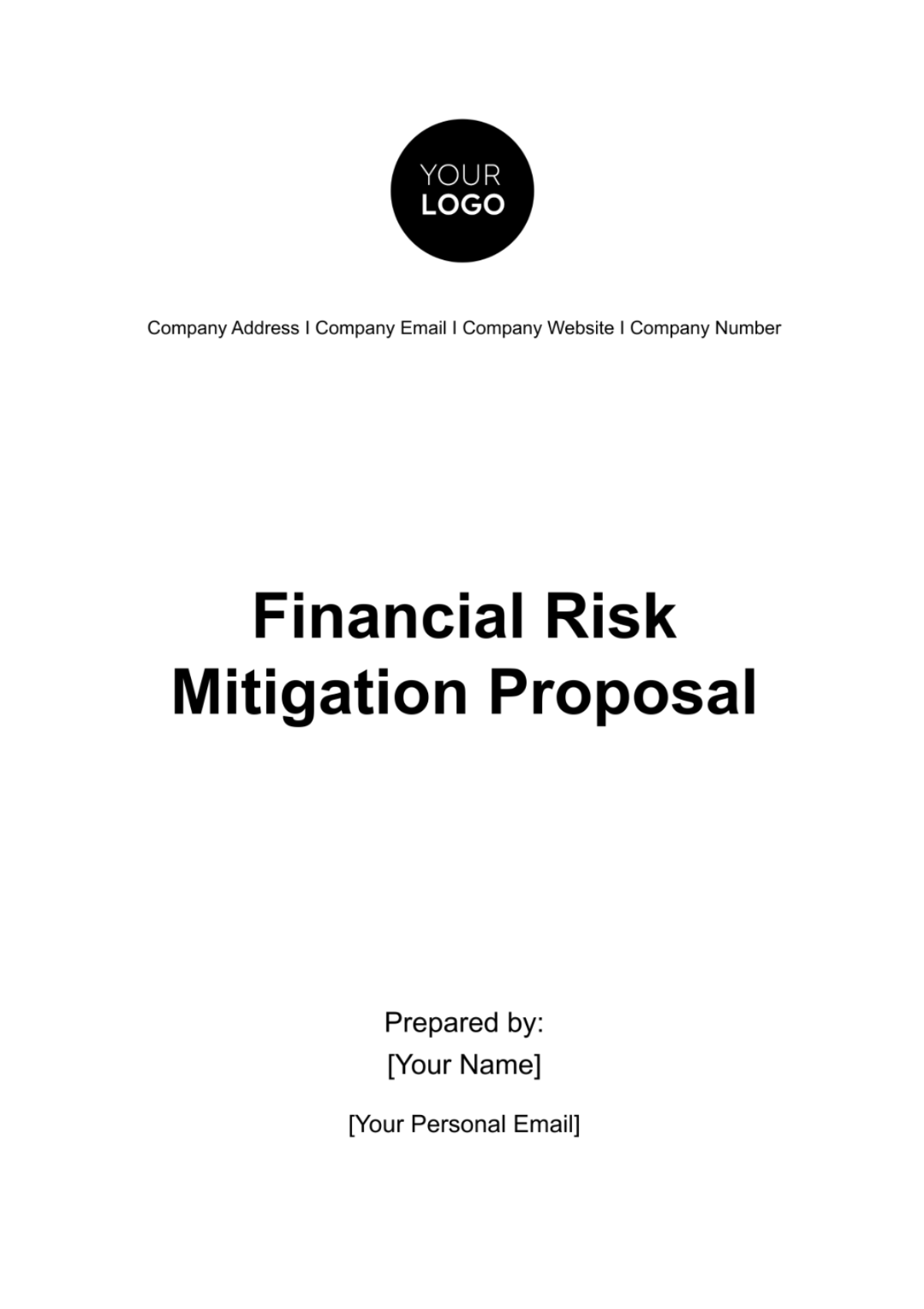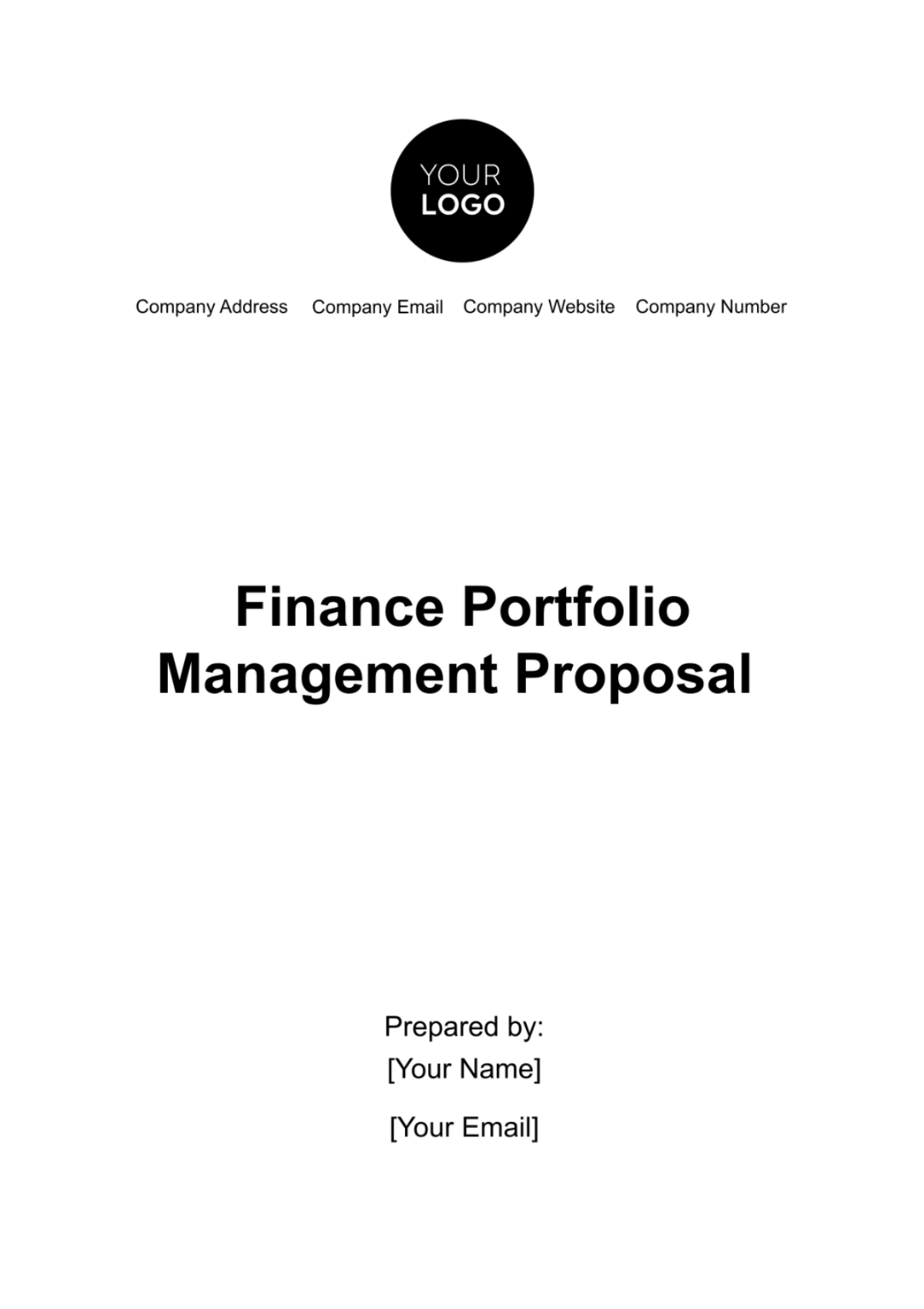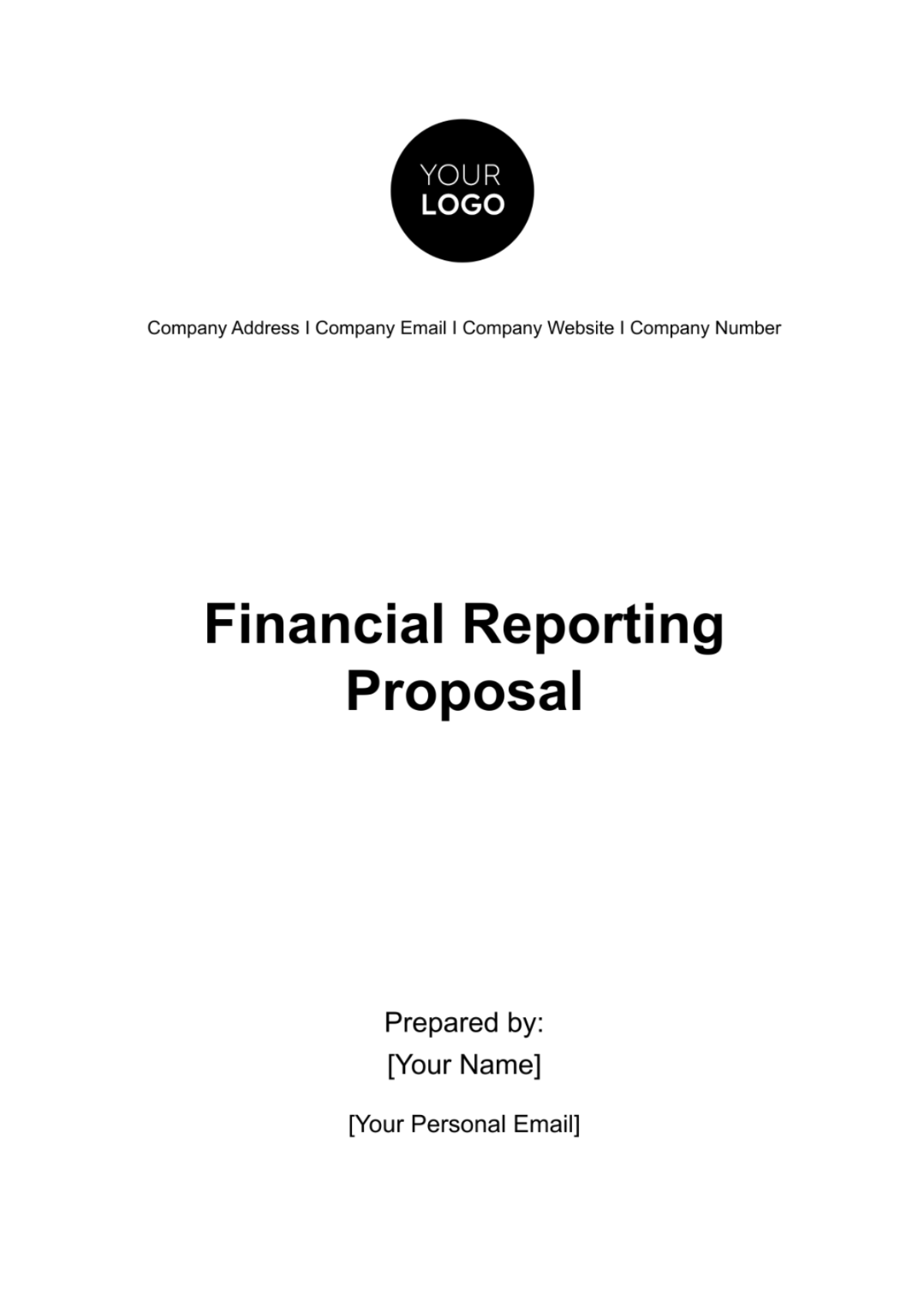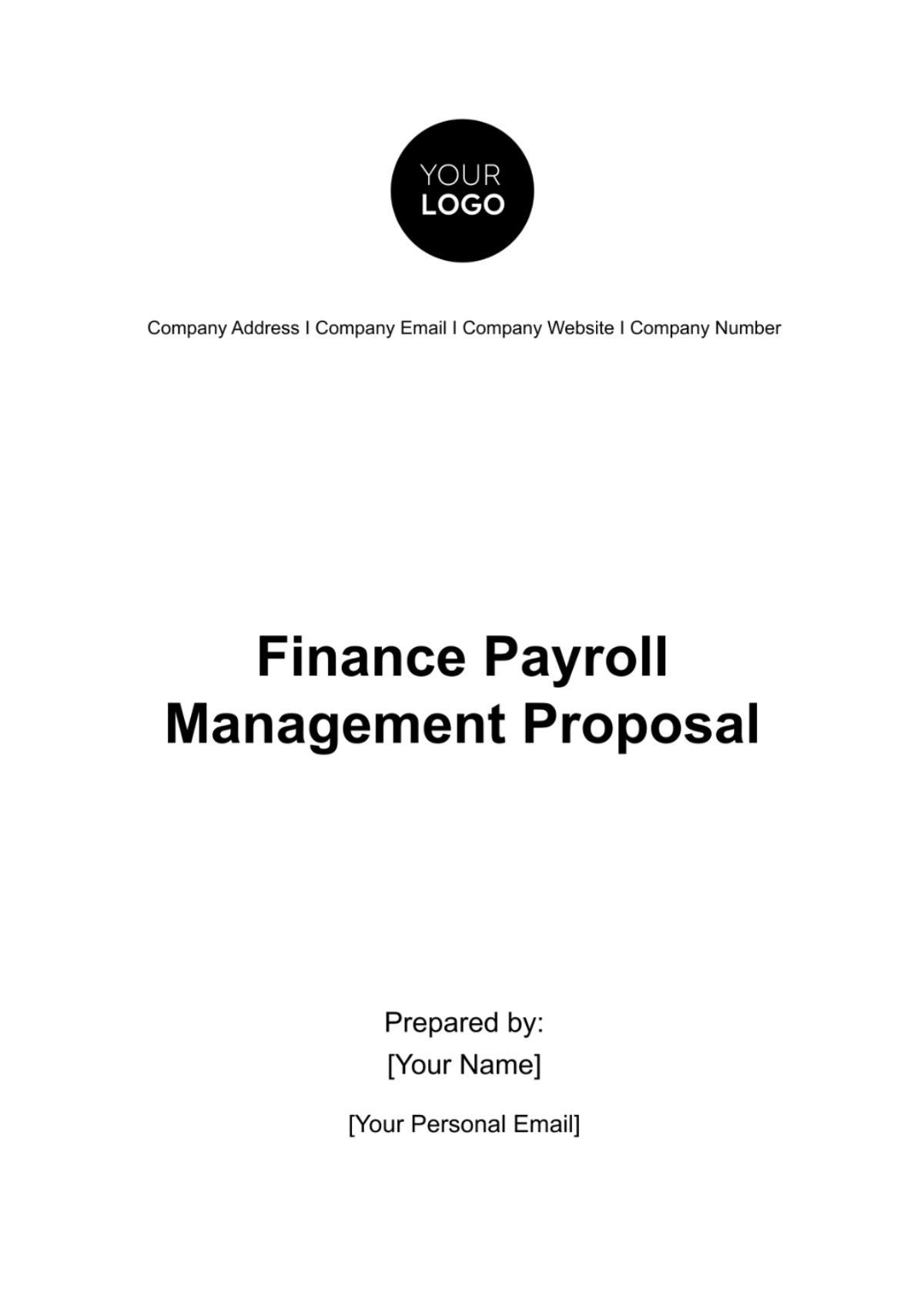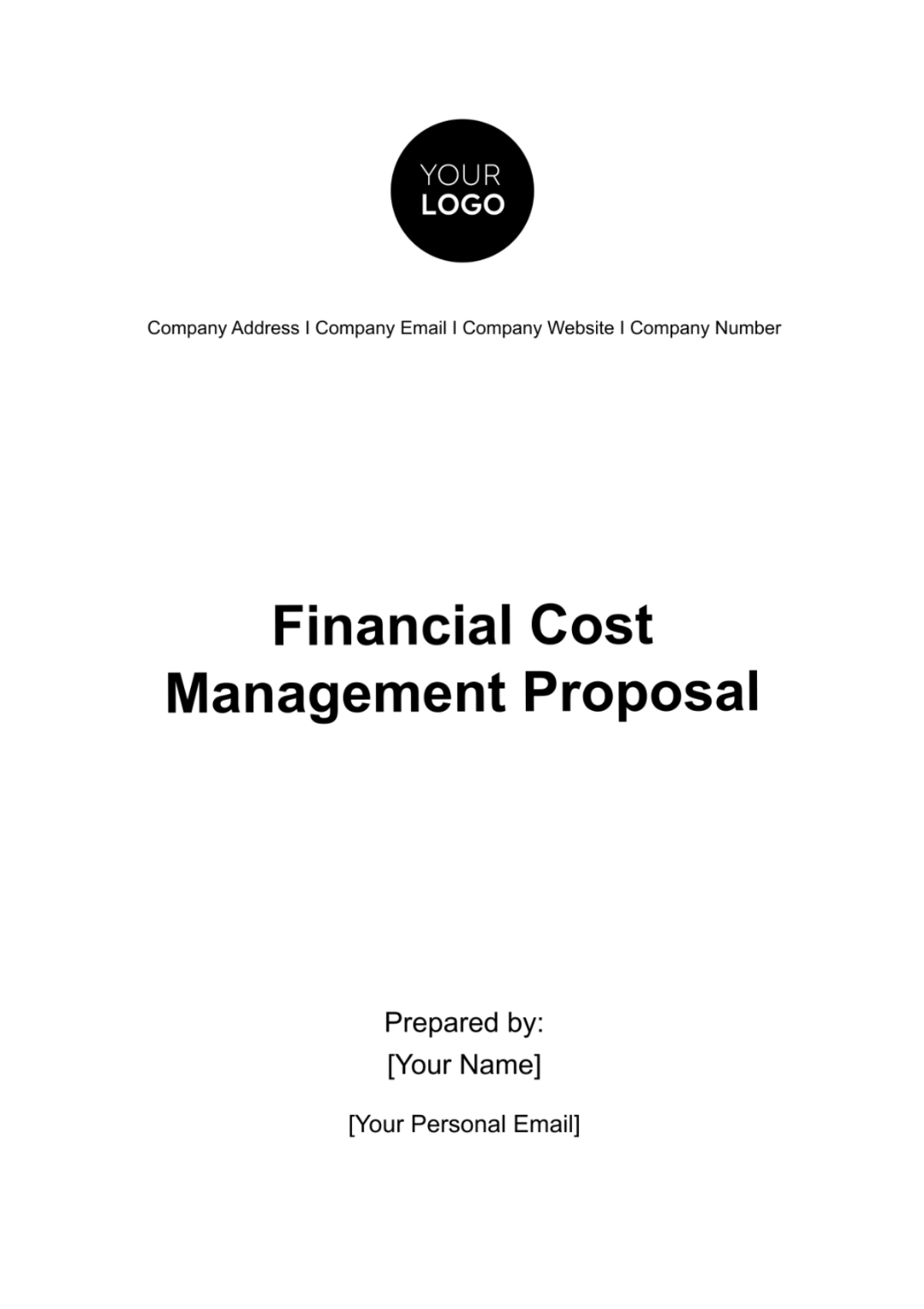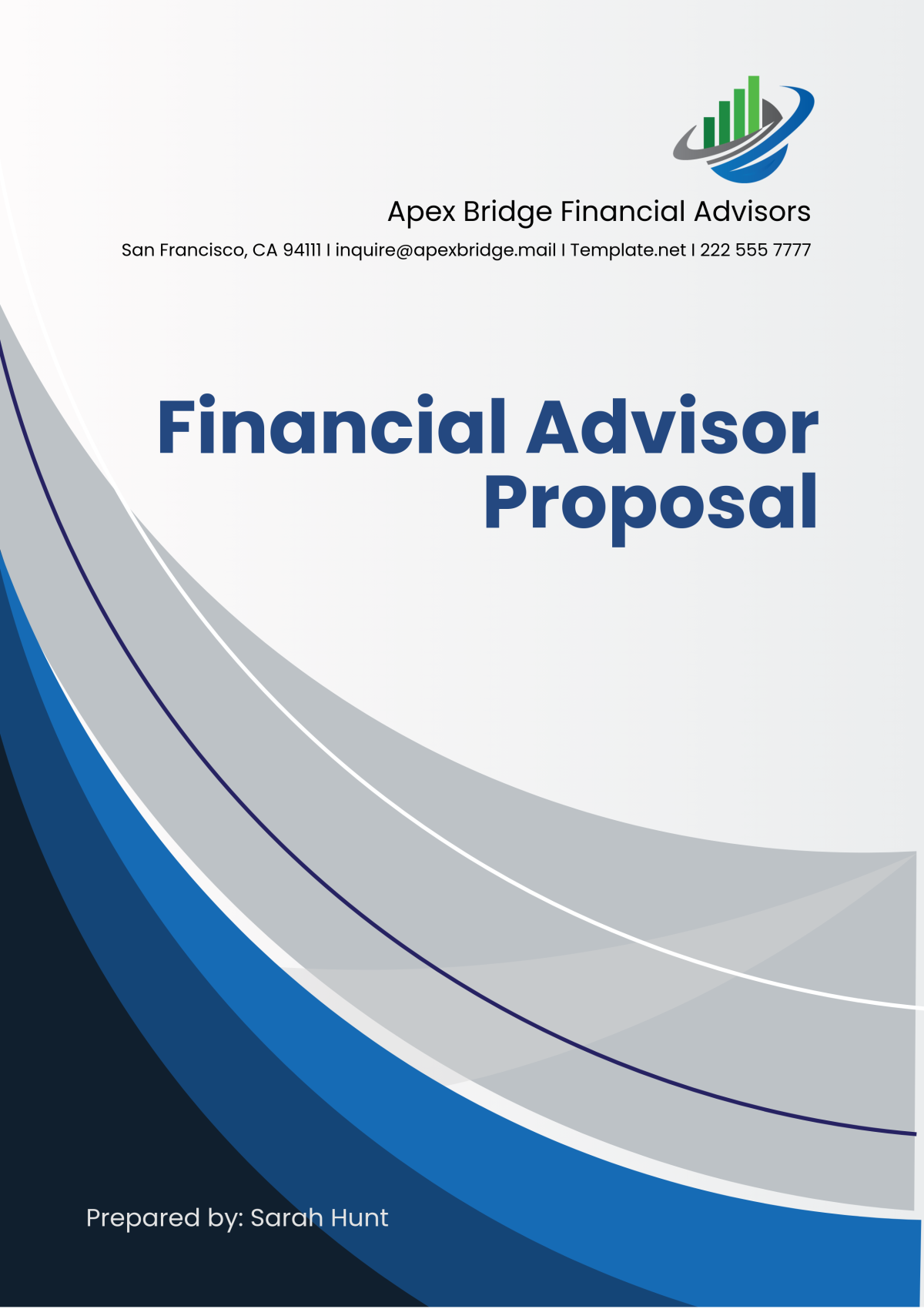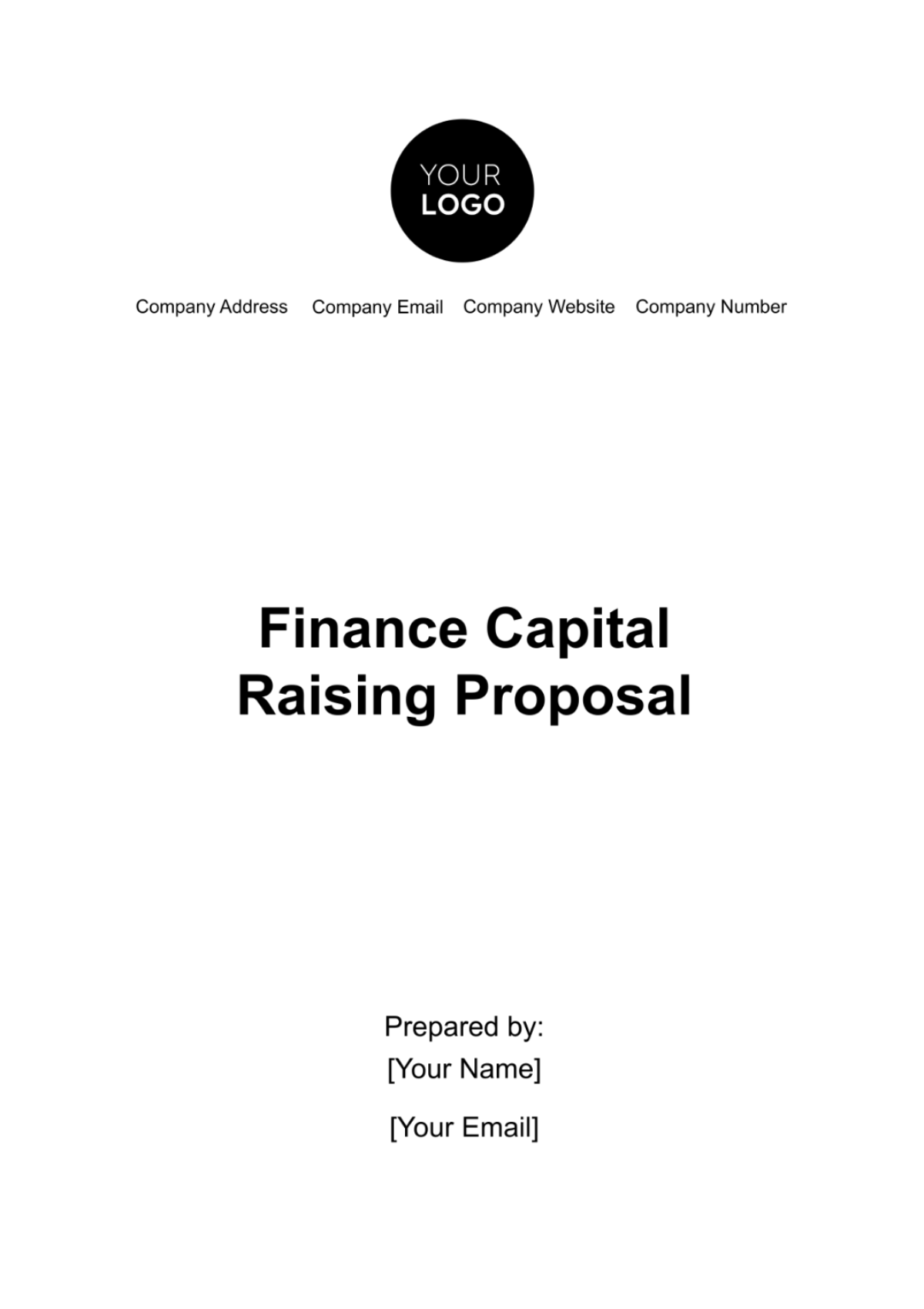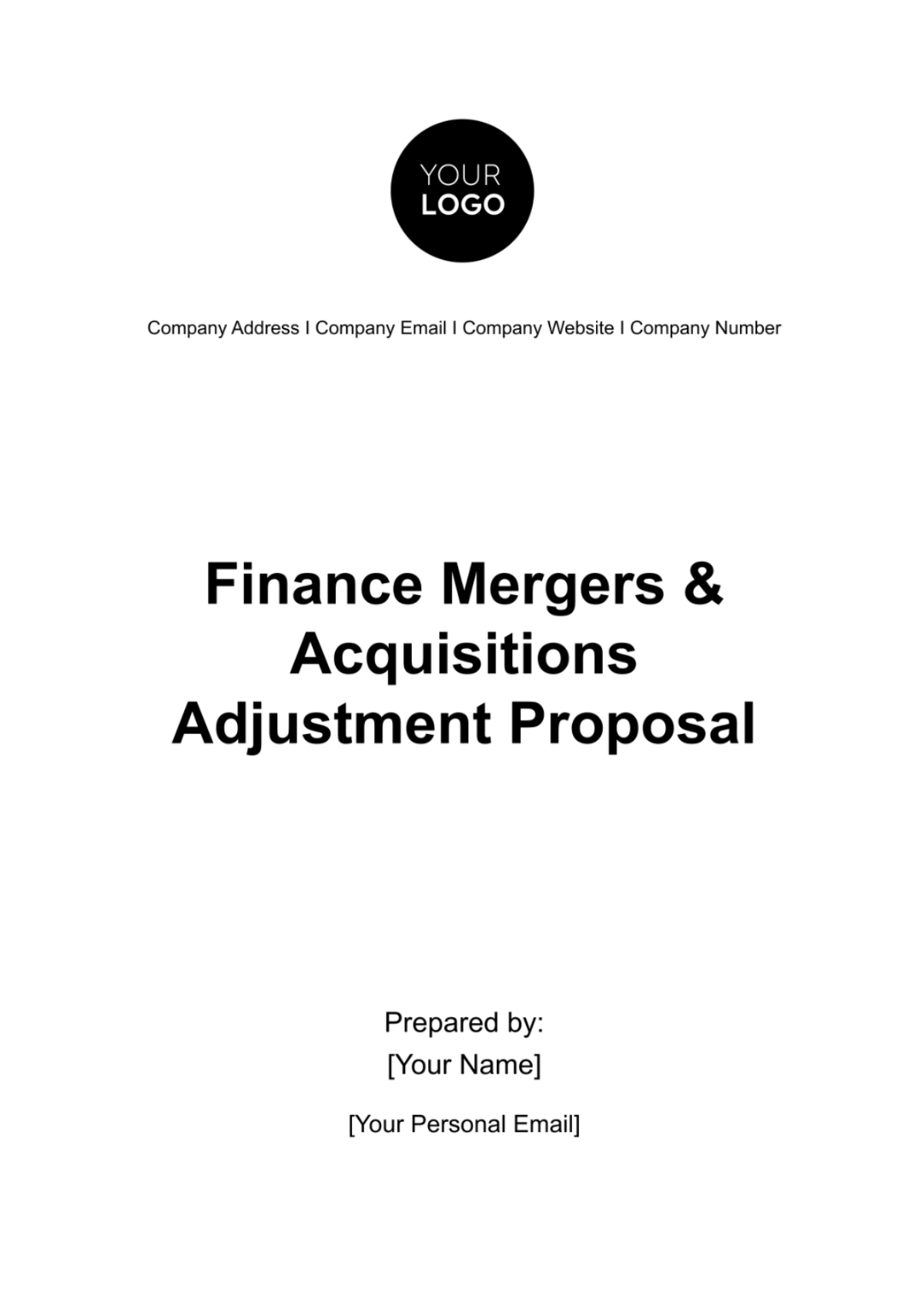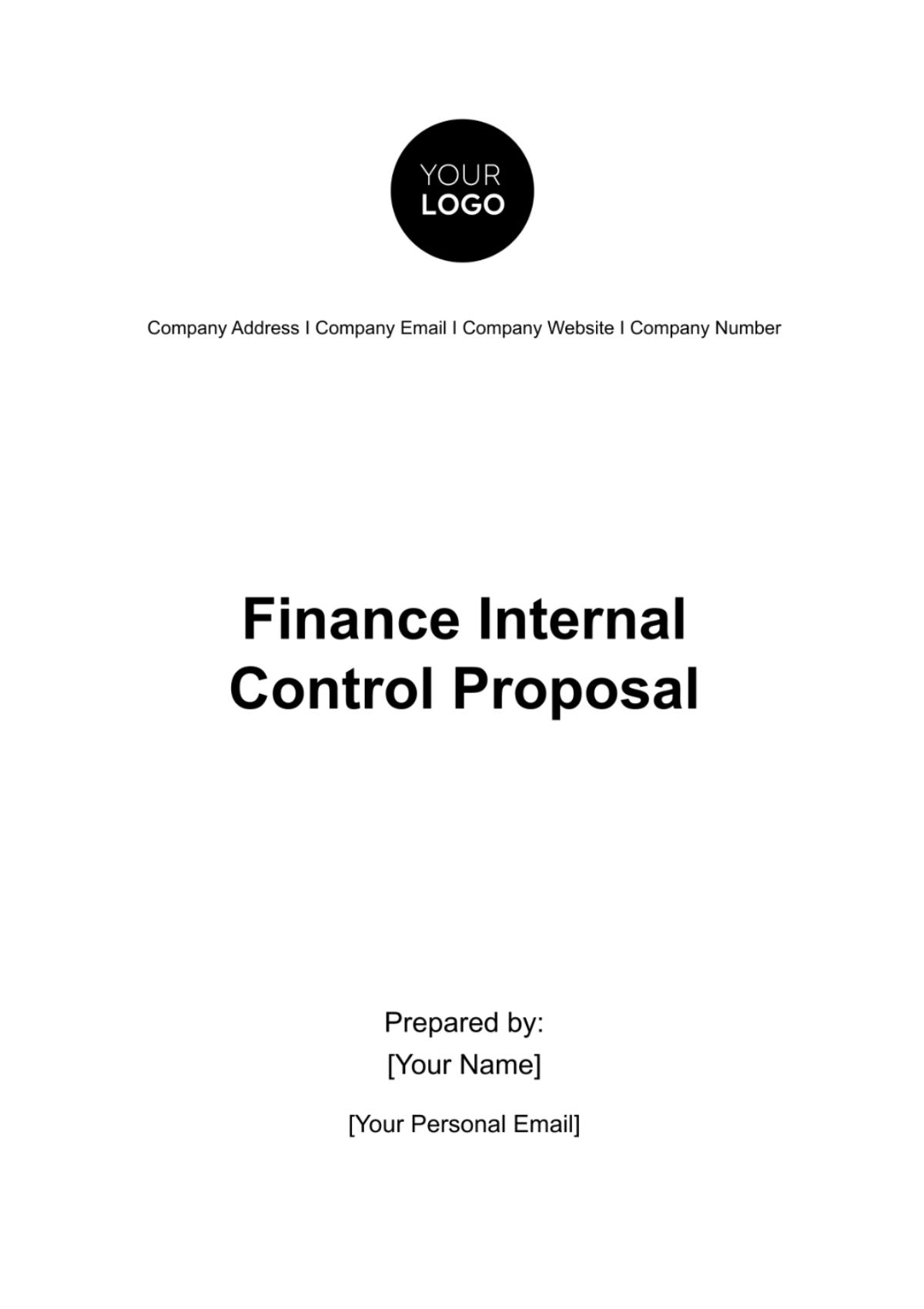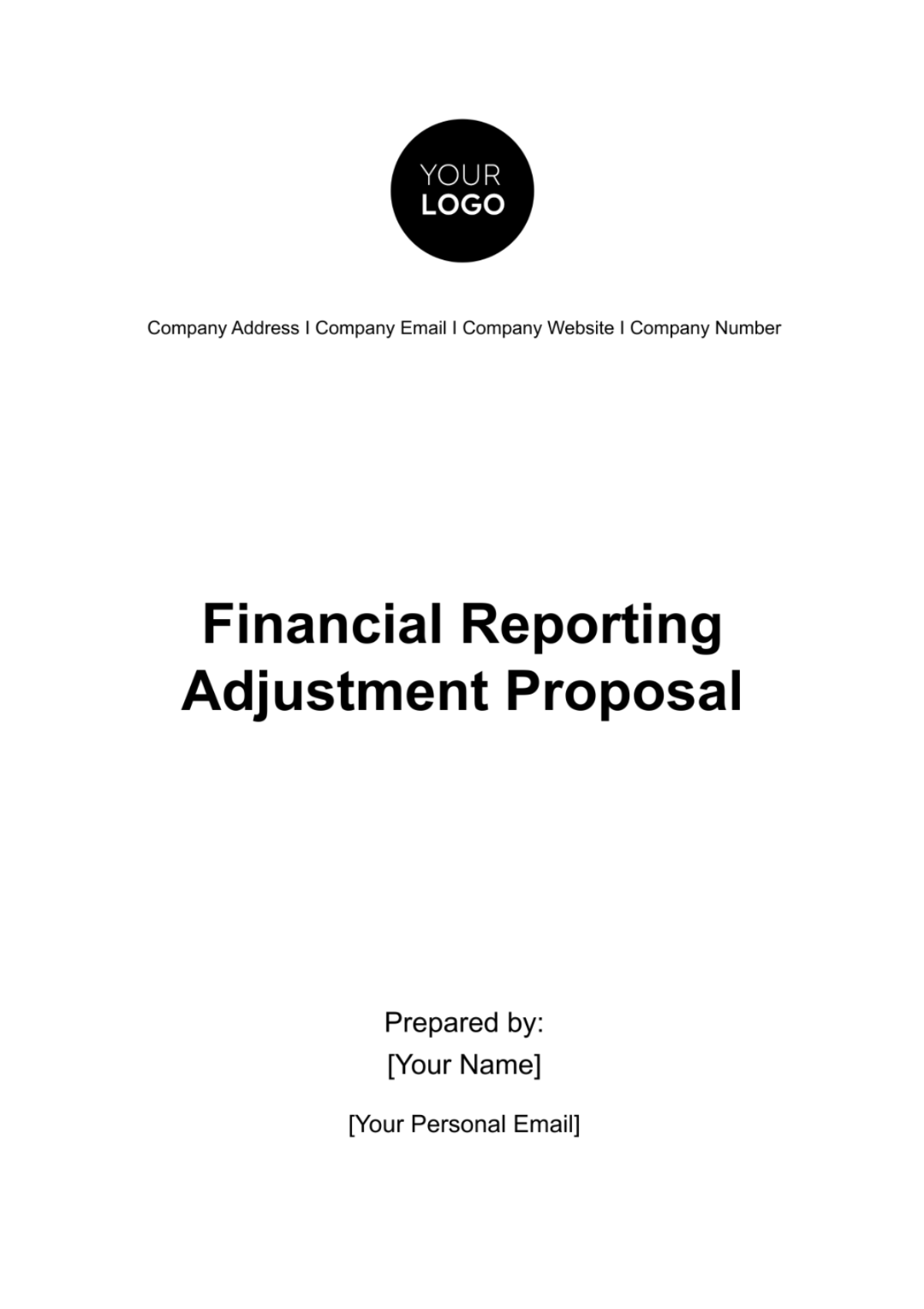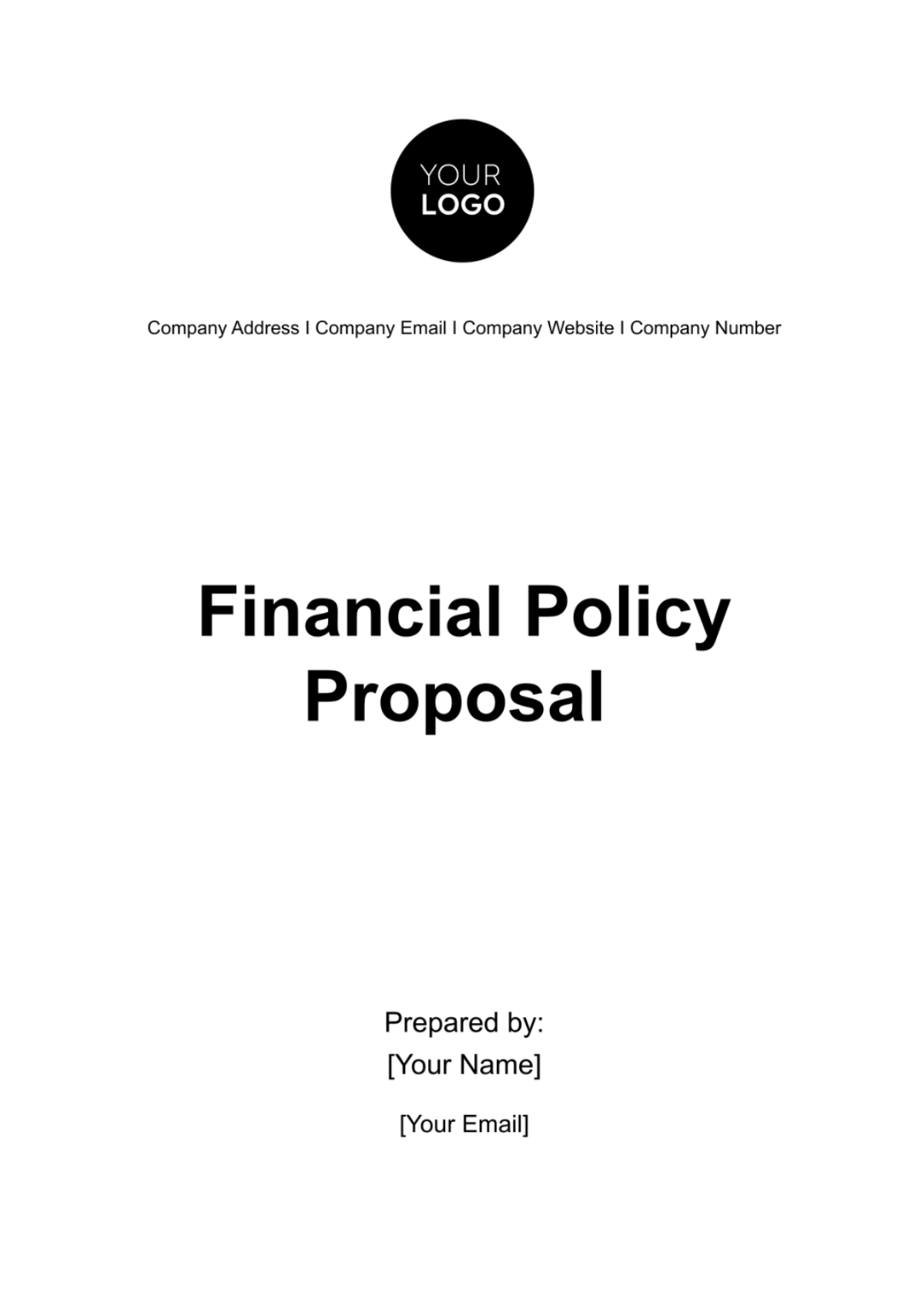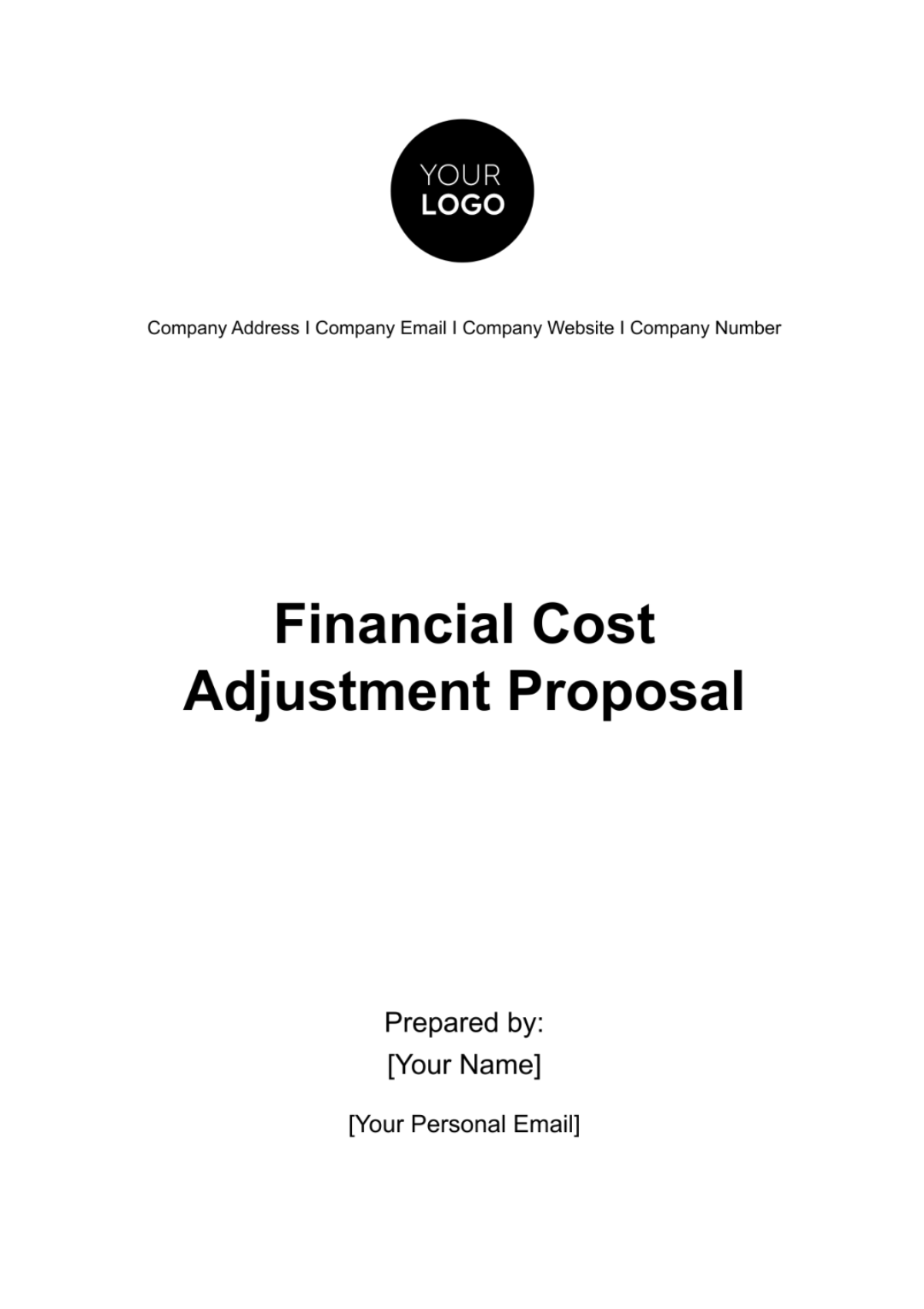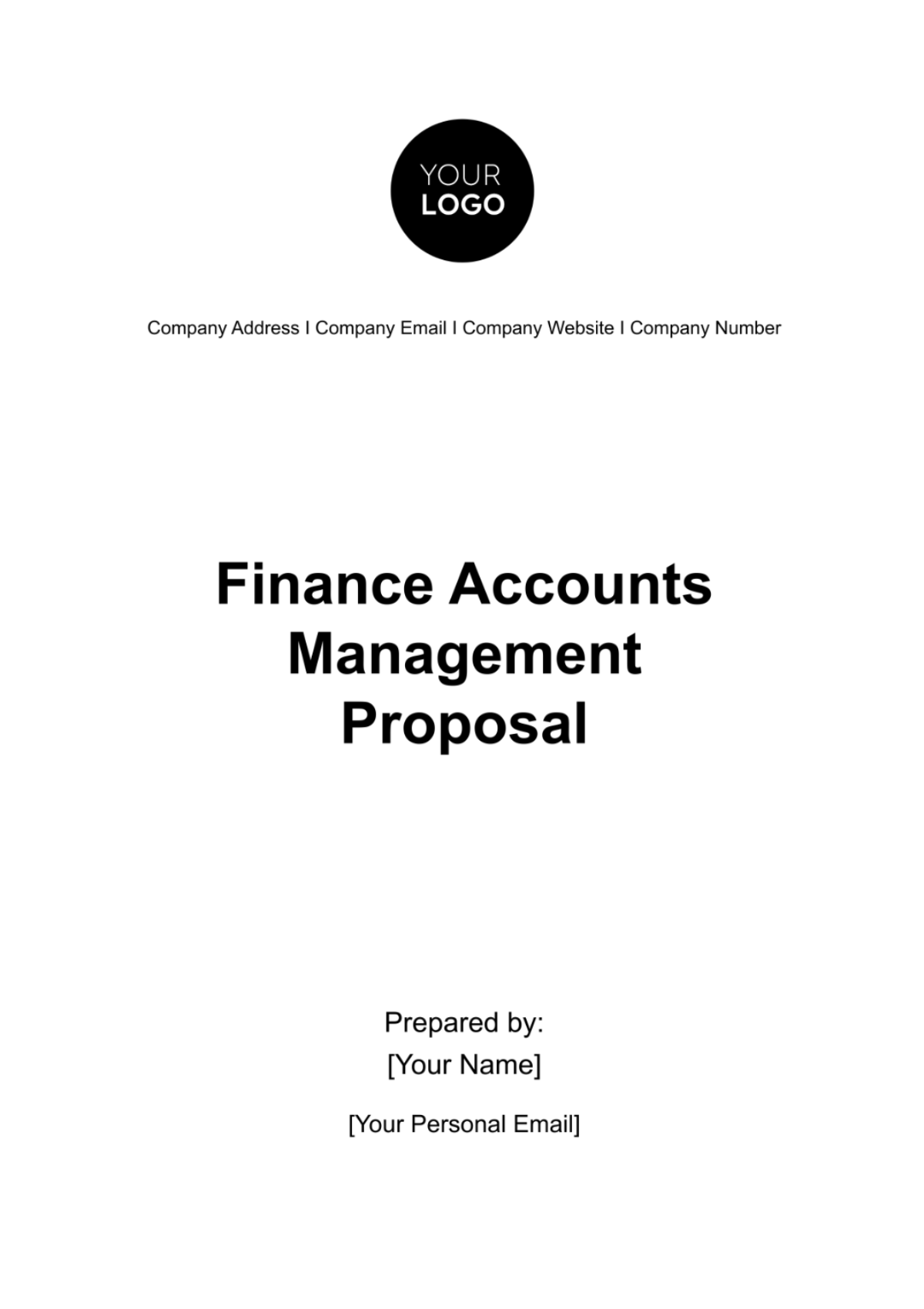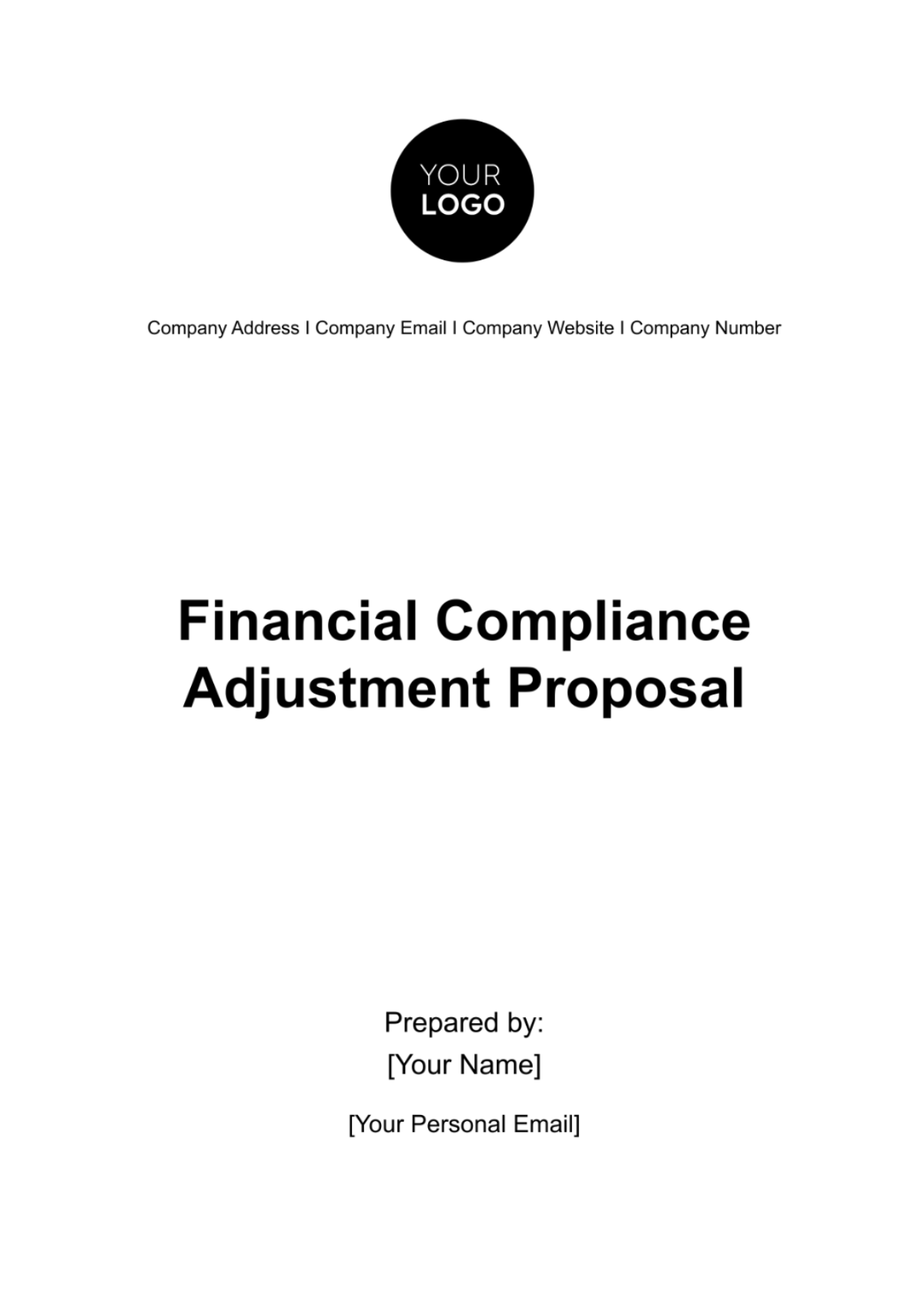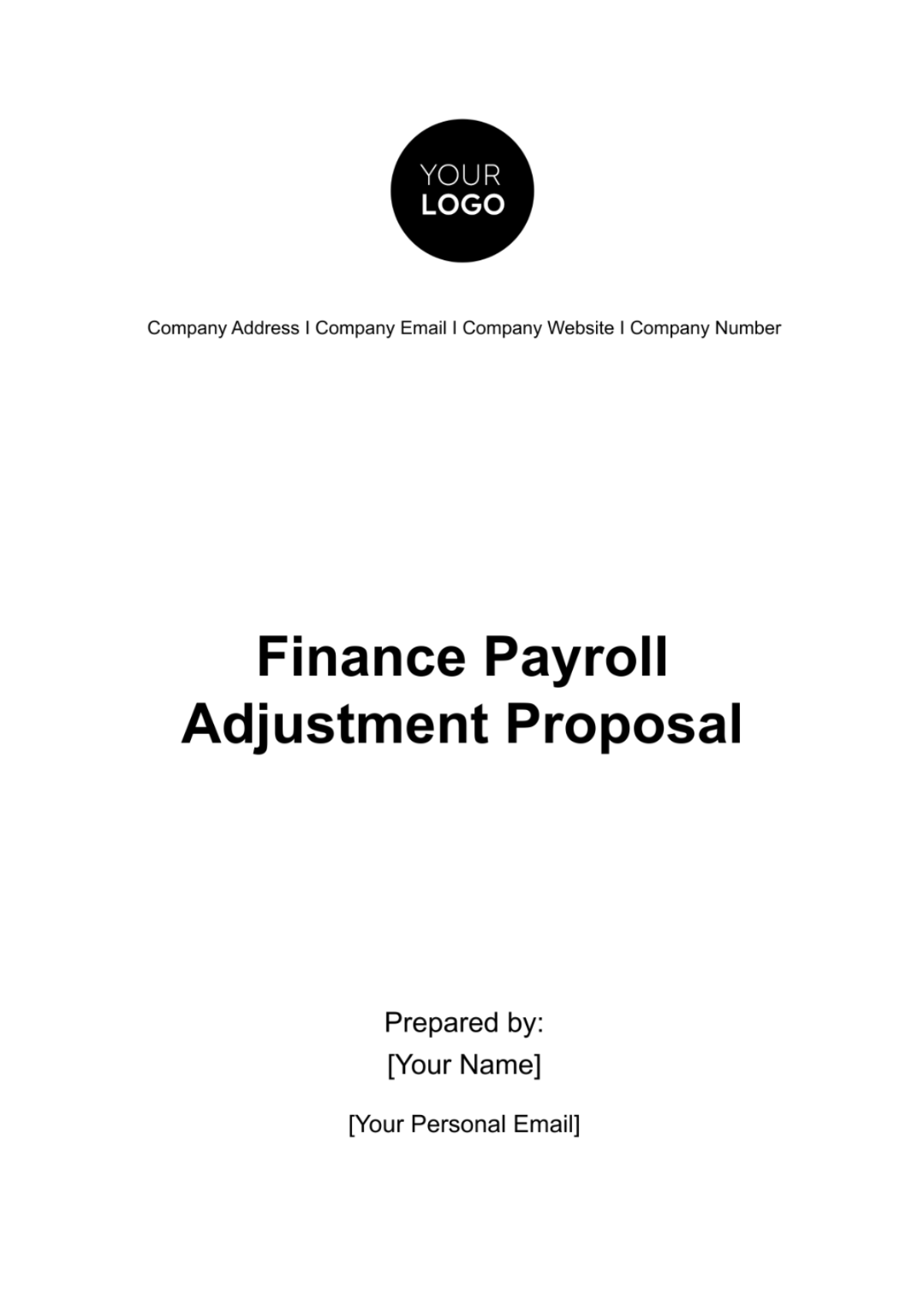Finance Internal Control Proposal
Executive Summary
[Your Company Name] proposes the implementation of a comprehensive internal control system to fortify the financial integrity and reliability of our operations. In recent assessments, certain challenges have been identified in our financial processes, necessitating a strategic approach to mitigate risks, enhance compliance, and safeguard our assets.
A. Background
In the current financial landscape, the need for a robust internal control system has become increasingly evident. Instances of discrepancies, potential fraud, and compliance concerns underline the urgency to address these issues systematically. By implementing a sound internal control framework, [Your Company Name] aims to establish a secure financial environment that ensures the accuracy and transparency of our financial reporting.
B. Objectives
The primary objectives of this proposal include:
Ensuring accuracy and reliability in financial reporting.
Preventing and detecting fraudulent activities.
Enhancing compliance with industry regulations and internal policies.
Safeguarding assets and reducing financial risks.
C. Benefits
The implementation of the proposed internal control measures is anticipated to yield several benefits for [Your Company Name], including:
Improved financial transparency.
Reduced financial risks and potential losses.
Enhanced stakeholder confidence and trust.
Streamlined financial processes leading to operational efficiency.
Scope of Internal Control System
To achieve the objectives outlined, it is imperative to clearly define the scope of the internal control system. This will encompass key financial processes and activities within our organization.
A. In-Scope Processes
The following financial processes will be subject to the internal control system:
Accounts Payable: Implementing controls to verify and authorize payments, ensuring accuracy and compliance.
Accounts Receivable: Establishing measures to validate and record incoming revenues promptly.
Payroll Processing: Implementing controls to ensure accurate salary calculations, proper approvals, and compliance with labor laws.
Financial Reporting: Strengthening controls over the preparation and dissemination of financial statements to enhance accuracy and reliability.
B. Out-of-Scope Processes
While the internal control system aims to cover a broad spectrum of financial processes, the following areas are considered out of scope:
Marketing Expenditure: As this primarily falls under operational expenses, it will be managed through existing budgetary controls.
General Administrative Expenses: Routine administrative expenses will be subject to budgetary constraints rather than specific internal controls.
The rationale for these exclusions is to focus on critical financial processes requiring immediate attention and to avoid unnecessary complexities.
Internal Control Framework
In establishing a robust internal control framework, [Your Company Name] will adopt the COSO (Committee of Sponsoring Organizations of the Treadway Commission) framework, tailoring it to meet the specific needs of our organization.
A. Control Environment
To ensure an effective control environment, [Your Company Name] will:
Define Roles and Responsibilities: Clearly delineate the roles and responsibilities of individuals involved in financial processes, promoting accountability.
Segregation of Duties: Implement a segregation of duties policy to prevent conflicts of interest and enhance internal checks.
Ethical Standards: Establish and communicate ethical standards, fostering a culture of integrity within the organization.
B. Risk Assessment
The risk assessment process will involve:
Identification of Risks: Conduct a comprehensive risk analysis to identify potential threats to financial processes.
Risk Evaluation: Assess the impact and likelihood of identified risks to prioritize mitigation efforts.
Mitigation Strategies: Develop and implement mitigation strategies to address identified risks, considering both preventive and detective controls.
C. Control Activities
Control activities will be implemented to address specific risks identified in the risk assessment:
Approval Processes: Introduce robust approval workflows for financial transactions to ensure proper authorization.
Reconciliations: Conduct regular reconciliations of financial records to identify and rectify discrepancies promptly.
Monitoring Tools: Implement monitoring tools to track financial activities in real-time, enabling swift response to anomalies.
D. Information and Communication
Efficient information and communication channels will be established:
Financial Reporting Procedures: Define clear procedures for the preparation and dissemination of financial reports.
Internal Communication: Establish effective communication channels to disseminate financial policies and updates to relevant stakeholders.
E. Monitoring and Evaluation
To ensure the ongoing effectiveness of internal controls, [Your Company Name] will:
Periodic Reviews: Conduct periodic reviews of internal controls to assess their continued relevance and effectiveness.
Audits: Perform regular internal audits and engage external auditors to provide an independent evaluation of the internal control system.
Continuous Improvement: Establish a mechanism for continuous improvement, incorporating lessons learned from monitoring activities into the internal control framework.
Implementation Plan
The successful implementation of the internal control system will be executed through a phased approach, outlined below:
A. Timeline
Month 1-2: | Conduct a comprehensive risk assessment and finalize the internal control framework. |
B. Responsible Parties
Finance Department: Overall responsibility for the implementation of the internal control system.
Internal Audit Team: Conduct periodic reviews and audits to ensure compliance and effectiveness.
Human Resources: Facilitate training sessions for employees on the new control procedures.
C. Training and Awareness
A comprehensive training program will be developed and delivered to all relevant employees. The program will cover:
Overview of Internal Control Framework: Explaining the purpose and components of the internal control system.
Role-Specific Training: Tailoring training sessions to the specific roles and responsibilities of different employees within the organization.
The training program will be conducted through a combination of in-person sessions, online modules, and reference materials to ensure maximum effectiveness.
Budget
The successful implementation of the finance internal control system requires careful consideration of various costs associated with software, training, and potential consulting services.
A. Software Costs
Software Component | Vendor | Estimated Cost |
|---|---|---|
Internal Control Software | [Software Vendor] | [$50,000] |
The identified software components will form the technological backbone of our internal control system, ensuring real-time monitoring and control over financial processes.
B. Training Costs
Training Program | Training Provider | Estimated Cost |
|---|---|---|
Internal Control Workshops | [Training Company] | [$15,000] |
Comprehensive training programs will be conducted to ensure that all employees are well-versed in the new internal control procedures, promoting effective implementation.
C. Consulting Costs
Consulting Service | Consulting Firm | Estimated Cost |
|---|---|---|
External Audit Services | [Audit Firm] | [$30,000] |
External audit services and implementation support from experienced consultants will ensure an independent evaluation of our internal control system.
Finance Internal Control Proposal
A. Risk Mitigation Strategies
We will detail specific risk mitigation strategies aligned with the identified risks during the risk assessment process. By implementing these strategies, [Your Company Name] aims to proactively address potential challenges and enhance the effectiveness of the internal control system.
B. Vendor Risk Management
Given our reliance on external vendors for various services, a robust vendor risk management strategy will be implemented. This includes:
Vendor Due Diligence: Conduct thorough assessments of potential vendors to evaluate their financial stability, security measures, and adherence to regulatory standards.
Contractual Safeguards: Introduce clauses in vendor contracts that stipulate adherence to our internal control requirements, data security standards, and reporting obligations.
Regular Audits: Implement periodic audits of vendor performance to ensure continued compliance and identify any emerging risks.
C. Technology Risks
As technology forms a critical component of our internal control system, mitigating technology-related risks is imperative. The following strategies will be employed:
Data Encryption: Implement robust data encryption measures to protect sensitive financial information from unauthorized access.
Regular Software Updates: Ensure that all internal control software and monitoring tools are regularly updated to address potential vulnerabilities.
User Access Controls: Implement strict user access controls to prevent unauthorized access to the internal control system.
D. Communication and Change Management
Effective communication and change management are vital components of successful internal control implementation. This section outlines strategies to communicate the changes, garner support, and ensure a smooth transition for all stakeholders.
Communication Plan
A comprehensive communication plan will be developed to keep all stakeholders informed about the internal control implementation. Key elements include:
Regular Updates: Provide regular updates through emails, internal newsletters, and intranet announcements to keep employees informed about the progress and benefits of the internal control system.
Training Sessions: Conduct interactive training sessions to explain the new procedures, address concerns, and ensure that employees understand their roles in the implementation process.
A. Change Management
Change management strategies will be employed to facilitate a seamless transition:
Employee Engagement: Foster employee engagement by involving them in the change process. Seek feedback, address concerns, and highlight the positive impact of the internal control system on their work.
Leadership Support: Gain support from leadership by emphasizing the long-term benefits of the internal control system and showcasing its alignment with organizational goals.
Conclusion
The implementation of a robust finance internal control system at [Your Company Name] is essential for fortifying our financial processes, mitigating risks, and ensuring compliance. The proposed framework, encompassing control environment, risk assessment, control activities, information and communication, and monitoring and evaluation, provides a comprehensive strategy for achieving these objectives.
The implementation plan outlines a phased approach, incorporating a timeline, responsible parties, and a training program to ensure a smooth transition to the new internal control system.
The budget considerations presented highlight the estimated costs associated with software, training, and consulting services. A total budget of [$150,000] has been allocated for the successful implementation of the finance internal control system.
[Your Company Name] is confident that the proposed internal control measures will yield substantial benefits, including improved financial transparency, reduced risks, and enhanced stakeholder confidence. We look forward to the support and collaboration of all stakeholders in ensuring the success of this initiative.
For any inquiries or further information, please contact:
[Your Name]
[Your Company Email]

